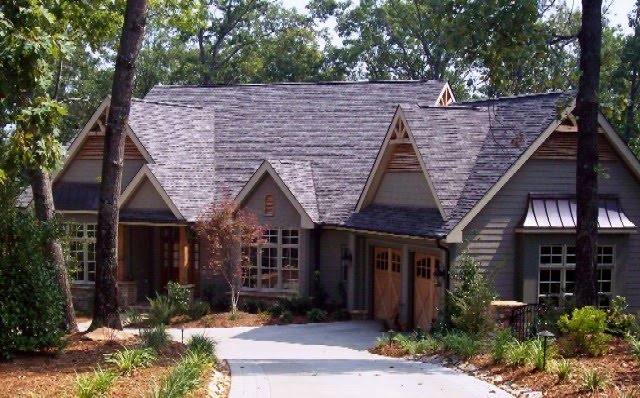Last Spring,longtime friend and client Connie lamented over lunch about not having a screened porch on her Keowee lakefront home. When I asked her why she didn't add one she responded by saying several builders had told her there was no way to put a porch where she wanted one because of her complex roof line.
" Sure you can", I said.
Just after Labor Day the selected contractor will begin her porch project. The journey from that lunch time conversation to her new reality was actually, pretty typical in the custom designing process for me. It has been the first of a lifetime experience for Connie. Even clients who have had design services in the past may not have experienced the extended process necessary for making an addition to a home. It can be complex.
I would love to tell you I was able to smooth everything so successfully Connie had a stress free experience but this was not the reality. The process requires a lot of work on the part of the client.
Sequential decision making is necessary. It is true some clients say, "Just do it!" but most want to have a say in the function, the style and the budget of their projects. Which means putting in the time
and the hard decision making is required. This sounds tough, I know but it is the truest path to a successful design that is yours.
It is a key responsibility of the designer to help the client identify the function, the style and the budget for their projects. Just yesterday I received an inquiry e-mail about our services. In that e-mail, the homeowner said,
"...my experience in the past with decorators is they have their own style or I have been unable to adequately communicate my preferences and I've ended up with rooms that are too formal/traditional for me."
Her lament is the very definition of the differences between a decorator and a designer. A decorator does just that, styles (decorates) your home for a season or to reflect current trends. It is a lot like going to Talbot's or Chico's for their pros to "style" your personal look. There is a tremendous difference in having your home decorated in the latest home fashions and having one designed to meet your needs both functional and aesthetic.
Designers are educated in creating volumetric art which uses the elements of light, color, texture, scale, contrast, focal point and furnishings to create an environment which reflects the interests, lifestyle and functional needs of the occupants which compliments the architecture and the views out every windows. We designers bring the full comprehensive design process to every project of every scope and every budget.
With Connie, we broke the process out into stages.
In the assessment stage, I came to her home to
take field measurements, take photographs of her architecture from the rear, to analyze how a porch would look from the dock, to identify best views we wanted to capture and to determine the material use best suited to her contemporary architecture.
The most important part of this process was the interview to determine how the porch would be used. It sounds simple but Connie's needs included her daily enjoyment of her gorgeous location, and adequate space for dining and gathering for her frequent entertaining schedule. To my delight , we also discovered she loved the idea of having the perfect spot for her grandchildren to experience Summer nights sleeping on a porch, watching the fire flies and the stars to the tunes of the hoot owls.
In the design stage we produced Plans "A" and "B" with both bird's eye views and elevations of how either plan would actually look on her house. The plans show options for a vaulted ceiling of either a hip or a gable style, a straight out from the main house floor plan and the other angled to the long view up the lake. That long view was really, really nice but angling the Porch visually dominated her architecture. We wanted a more cohesive statement so we choose the straight out floor plan and revised a furniture plan angled to capture the long view.
Once all the decisions have been made on the footprint and the materials, we produce design documents by which the projects are permittted, bid and, built. A selected plan is finalized with an on site review of all the materials selected: woods, stone, screen, railing, roofing, lighting, skirting, stain, furnishings, to give the client the best visual possible of what will be built and how it will look. Those series of decisions are necessary to make a project perfect. In some cases, clients are not good with conceptual space so for these folks we mark the outline of the floor plan onto the ground with marking paints or flags and tape. It is always an emotional and a financial expense to add an addition to one's home so we do our best to help the client "see" what does not yet exist.
Bidding out the project is actually pretty simple. Invite 2 or 3 good builders to come meet the home owners, walk the site, review the plans. Encourage builders to bring their best crew and make any alternative recommendations they may have, before they bid, so those changes can be reflected in the bid.
The hard part for Connie was in choosing the builder! All good builders, with solid reputations, reasonable timelines and competitive bids. When you like them all, the choice is hardest.
If you are considering adding to your life, not just to your house, then do prepare for a positive experience by choosing those professionals who can best guide you in attaining your goal in a way which will reward you with a "happily ever after". If you would like our assistance in reaching this goal please e-mail us, we will be happy to respond.
































